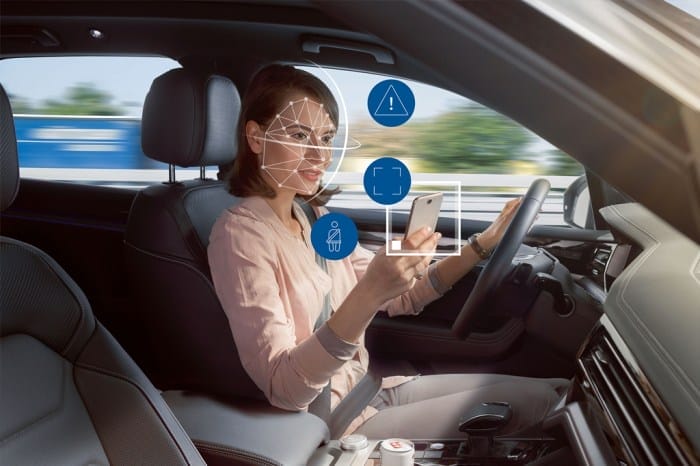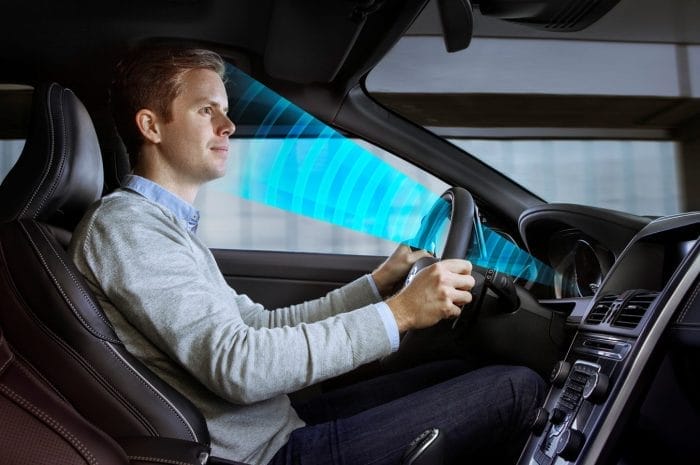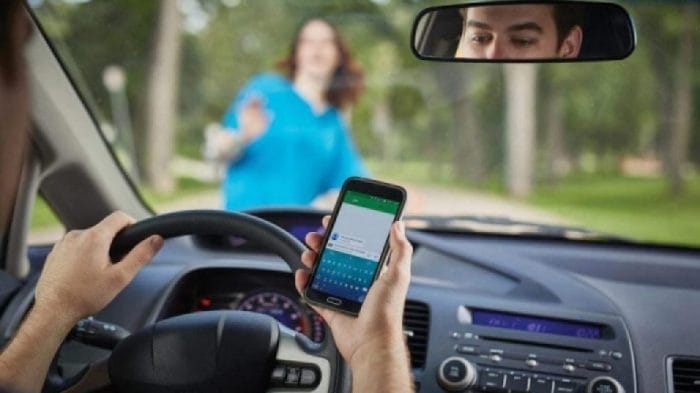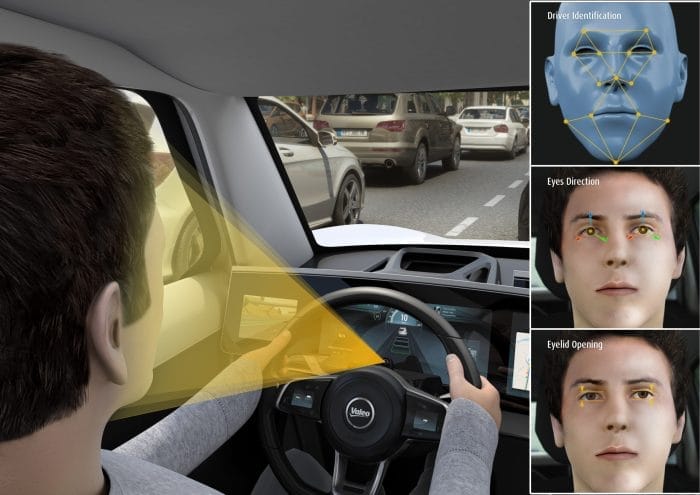As technology advances, insurance companies are increasingly using driving monitors to assess driving behavior and adjust premiums accordingly. These devices offer the potential for safer roads, lower insurance costs, and personalized driving feedback. However, they also raise questions about privacy, data security, and ethical implications.
This comprehensive guide delves into the world of driving monitors, exploring their impact on insurance premiums, privacy concerns, installation and usage, accuracy and reliability, ethical considerations, and future developments. We’ll also examine the regulatory landscape governing their use and conduct a cost-benefit analysis to assess their overall value.
Understand Driving Monitoring Devices

Insurance companies utilize various types of driving monitoring devices to gather data on driving behavior, which is then analyzed to assess risk and determine insurance premiums. These devices range from simple plug-in devices to advanced telematics systems.
The data collected by these devices includes metrics such as speed, acceleration, braking, cornering, and mileage. This data is analyzed using sophisticated algorithms to identify patterns and behaviors that indicate risky driving. Insurance companies use this information to determine the level of risk associated with each driver and adjust premiums accordingly.
Types of Driving Monitoring Devices
There are several types of driving monitoring devices commonly used by insurance companies:
- Plug-in Devices: These are small devices that plug into the vehicle’s diagnostic port and collect data on driving behavior. They are relatively inexpensive and easy to install.
- Telematics Systems: These are more advanced devices that are installed in the vehicle and collect a wider range of data, including GPS location, speed, acceleration, braking, and cornering. They also allow for real-time monitoring of driving behavior.
- Smartphone Apps: Some insurance companies offer smartphone apps that can be used to track driving behavior. These apps use the phone’s sensors to collect data on speed, acceleration, braking, and cornering.
How Driving Monitoring Data is Analyzed
The data collected by driving monitoring devices is analyzed using sophisticated algorithms to identify patterns and behaviors that indicate risky driving. These algorithms consider factors such as:
- Speeding: Consistently driving above the posted speed limit is a significant indicator of risky driving.
- Hard Acceleration and Braking: Sudden acceleration and braking can indicate aggressive driving and a higher risk of accidents.
- Cornering: Taking corners too quickly or sharply can also be a sign of risky driving.
- Mileage: High mileage can indicate that a driver is spending a lot of time on the road, which increases the risk of accidents.
Insurance companies use this information to determine the level of risk associated with each driver and adjust premiums accordingly.
Impact on Insurance Premiums
Driving monitoring devices have a significant impact on insurance premiums, offering potential benefits for safe drivers. These devices track driving habits, such as speeding, hard braking, and nighttime driving, providing valuable insights into an individual’s driving behavior.
By demonstrating safe driving habits, drivers can potentially lower their insurance premiums. Insurance companies may offer discounts, rebates, or other incentives to policyholders who consistently exhibit good driving behavior. Conversely, drivers who engage in risky behaviors, such as speeding or reckless driving, may face higher premiums as they pose a greater risk to the insurance company.
Examples of Incentives for Good Driving Behavior
- Discounts: Insurance companies may offer discounts on premiums for policyholders who maintain a clean driving record and consistently demonstrate safe driving habits.
- Rebates: Some insurers provide rebates or cash-back rewards to policyholders who meet certain safe driving criteria, such as completing a defensive driving course or maintaining a certain number of accident-free years.
- Telematics-Based Insurance Programs: These programs utilize telematics devices to track driving behavior and offer personalized insurance rates based on individual driving habits. Safer drivers may qualify for lower premiums under these programs.
- Usage-Based Insurance (UBI) Programs: UBI programs monitor driving patterns, including the time of day, distance traveled, and frequency of use. Drivers who primarily operate their vehicles during safer times and for essential purposes may benefit from lower premiums.
Privacy and Data Security

The implementation of driving monitoring devices in vehicles has sparked discussions surrounding privacy concerns and data security. It is essential to address these concerns to ensure that driver data is collected, used, and stored responsibly.
Insurance companies are taking various measures to protect the privacy of driver data. They employ robust encryption techniques to safeguard data during transmission and storage. Access to driver data is restricted to authorized personnel only. Furthermore, insurance companies adhere to strict data retention policies, ensuring that driver data is not retained indefinitely.
Data Collection and Usage Regulations
The collection and use of driver data by insurance companies are governed by regulations and laws. These regulations aim to protect the privacy of drivers and ensure that data is used responsibly. Insurance companies are required to obtain consent from drivers before collecting their data.
They are also required to provide clear and transparent information about how the data will be used.
In addition to regulations, there are industry standards that insurance companies must adhere to. These standards include guidelines for data collection, storage, and usage. By complying with these standards, insurance companies can demonstrate their commitment to protecting driver privacy.
Installation and Usage

Installing a driving monitoring device in a car is a straightforward process that typically involves the following steps: Step 1: Choose a Compatible Device: Select a driving monitoring device compatible with your car model and insurance provider. Step 2: Purchase and Receive the Device: Once you have chosen a device, purchase it from your insurance provider or a reputable retailer.
The device will be shipped to your address. Step 3: Prepare Your Car: Before installing the device, ensure your car is clean and free of debris. Turn off the engine and allow it to cool down completely. Step 4: Locate the OBD-II Port: Find the OBD-II port in your car, which is usually located under the dashboard, near the steering wheel.
Step 5: Connect the Device: Plug the device into the OBD-II port. Make sure it fits snugly and securely. Step 6: Activate the Device: Follow the instructions provided by your insurance provider to activate the device.
This may involve downloading an app or creating an online account. Step 7: Mount the Camera: If your device has a camera, mount it on the windshield using the provided adhesive or suction cup. Position the camera so that it has a clear view of the road ahead.
Step 8: Test the Device: Once the device is installed and activated, take a short drive to test it. Ensure that it is recording data and transmitting it to your insurance provider.
Troubleshooting Common Issues
If you encounter any technical issues with your driving monitoring device, here are some troubleshooting tips:
Check the Connection
Ensure that the device is properly plugged into the OBD-II port and that the connection is secure.
Restart the Device
If the device is not responding, try restarting it by unplugging it from the OBD-II port and then plugging it back in.
Update the Firmware
Check if there are any firmware updates available for your device. Installing the latest firmware can resolve bugs and improve performance.
Contact Your Insurance Provider
If you are still experiencing issues, contact your insurance provider for assistance. They may be able to provide additional troubleshooting steps or arrange for a technician to inspect the device.
Accuracy and Reliability

Driving monitoring devices are generally considered accurate and reliable in capturing data related to driving behavior. However, the accuracy and reliability of the data collected can be influenced by several factors.
Factors Affecting Accuracy
- Device Quality: The quality and capabilities of the driving monitoring device itself can impact the accuracy of the data collected. Higher-quality devices with advanced sensors and algorithms tend to provide more precise and reliable data.
- Installation and Calibration: Proper installation and calibration of the driving monitoring device are crucial for accurate data collection. Incorrect installation or improper calibration can lead to erroneous readings.
- Environmental Conditions: External factors such as weather conditions, road conditions, and lighting can affect the accuracy of the data collected. For instance, heavy rain or snow can interfere with GPS signals, leading to inaccurate location data.
- Driving Behavior: The driving behavior of the individual using the vehicle can also influence the accuracy of the data collected. Aggressive driving, sudden braking, or sharp turns can be misinterpreted by the device, leading to inaccurate readings.
Examples of Inaccurate Data
In certain situations, the data collected by driving monitoring devices may not be entirely accurate. For example:
- GPS Errors: GPS signals can be unreliable in areas with poor satellite coverage, resulting in inaccurate location data.
- Sensor Misinterpretations: The device’s sensors may misinterpret certain driving maneuvers, such as lane changes or turns, leading to incorrect data.
- False Positives and Negatives: The device may generate false positives (detecting an event that did not occur) or false negatives (failing to detect an event that did occur), leading to inaccurate data.
Ethical Considerations

The use of driving monitoring devices in insurance poses several ethical concerns that require careful consideration.
A key ethical issue is driver consent. It is essential to obtain explicit and informed consent from drivers before installing and using monitoring devices in their vehicles. This ensures that drivers are aware of the purpose and scope of data collection, and that they have the opportunity to decline participation if they have concerns about privacy or potential discrimination.
Data Ownership and Control
Another ethical concern is data ownership and control. Insurance companies typically own and control the data collected by monitoring devices, which raises questions about who has the right to access and use this data. Drivers may feel that they should have more control over their own data, and that insurance companies should not be able to use it for purposes other than determining insurance premiums.
Potential for Discrimination
The use of driving monitoring devices also raises concerns about potential discrimination. If insurance companies use data from these devices to set premiums, there is a risk that certain groups of drivers could be unfairly penalized. For example, drivers who live in urban areas or who frequently drive in congested traffic may be seen as higher-risk drivers and charged higher premiums, even if they are actually safe drivers.
Ethical Responsibilities of Insurance Companies
Insurance companies have a significant ethical responsibility to use driving monitoring devices in a responsible and ethical manner. They should ensure that drivers are fully informed about the purpose and scope of data collection, that they have the opportunity to decline participation, and that their data is used fairly and equitably.
Insurance companies should also have robust data security measures in place to protect driver data from unauthorized access or misuse.
Future Developments
As technology continues to advance at a rapid pace, the future of driving monitoring is expected to be shaped by a number of key developments. These advancements have the potential to transform the insurance industry and driver behavior, making roads safer and more efficient.
One of the most significant developments is the increasing use of artificial intelligence (AI) and machine learning (ML) in driving monitoring systems. AI-powered systems can analyze vast amounts of data collected from sensors and cameras to identify patterns and trends in driver behavior.
This information can be used to provide personalized feedback to drivers, helping them to improve their driving habits and reduce the risk of accidents.
Integration with Advanced Driver Assistance Systems (ADAS)
Driving monitoring technology is likely to become increasingly integrated with advanced driver assistance systems (ADAS). ADAS features such as lane departure warning, automatic emergency braking, and adaptive cruise control can provide valuable data to driving monitoring systems. This data can be used to assess driver attentiveness, reaction times, and overall driving performance.
Real-time Feedback and Intervention
Future driving monitoring systems may be able to provide real-time feedback and intervention to drivers. For example, a system might issue an alert if it detects that a driver is distracted or drowsy. The system could also take control of the vehicle to prevent an accident if the driver fails to respond to the alert.
Impact on Insurance Premiums and Driver Behavior
The advancements in driving monitoring technology are expected to have a significant impact on insurance premiums and driver behavior. As insurers gain access to more detailed and accurate data on driver behavior, they may be able to offer personalized insurance rates that reflect the individual risk of each driver.
This could lead to lower premiums for safe drivers and higher premiums for risky drivers.
Additionally, the availability of real-time feedback and intervention could help to improve driver behavior and reduce the risk of accidents. By providing drivers with immediate feedback on their driving habits, monitoring systems can help them to identify areas where they need to improve.
Impact on Driving Behavior

Driving monitoring devices have the potential to significantly influence driver behavior, encouraging safer driving habits and reducing risky behaviors. These devices provide real-time feedback on driving performance, allowing drivers to identify and correct unsafe practices. Additionally, the data collected by these devices can be used by insurance companies to create personalized feedback programs, further promoting safe driving.
Encouraging Safer Driving Habits
Driving monitoring devices can encourage safer driving habits by providing drivers with immediate feedback on their performance. This feedback can help drivers become more aware of their driving patterns and identify areas where they need to improve. For example, a device may alert a driver when they are speeding, following too closely, or making sudden lane changes.
This feedback can help drivers to develop safer habits, such as maintaining a safe following distance, obeying speed limits, and signaling before changing lanes.
Reducing Risky Behaviors
Driving monitoring devices can also help to reduce risky behaviors, such as distracted driving, speeding, and aggressive driving. These devices can detect when a driver is using a cell phone, texting, or engaging in other distracting activities. They can also alert drivers when they are exceeding the speed limit or driving aggressively.
This feedback can help drivers to become more aware of their risky behaviors and to take steps to reduce them.
Improving Road Safety
Driving monitoring programs have been shown to successfully improve road safety. For example, a study by the National Highway Traffic Safety Administration (NHTSA) found that drivers who participated in a driving monitoring program were less likely to be involved in crashes.
Another study by the Insurance Institute for Highway Safety (IIHS) found that drivers who used a driving monitoring device were less likely to speed or engage in other risky behaviors.
Regulatory Landscape

The regulatory landscape governing the use of driving monitoring devices varies across jurisdictions, reflecting the evolving nature of this technology and the need for appropriate oversight. Government agencies play a crucial role in overseeing the implementation and usage of these devices to ensure responsible and ethical practices.
Government Oversight
Government agencies, such as transportation authorities and insurance regulators, are responsible for developing and enforcing regulations governing the use of driving monitoring devices. These regulations may address issues such as data privacy, security, accuracy, and ethical considerations. For example, some jurisdictions may require insurance companies to obtain consent from policyholders before installing monitoring devices in their vehicles, while others may impose restrictions on the type of data that can be collected and used.
Potential Regulatory Challenges
The rapid advancements in driving monitoring technology pose potential regulatory challenges. As devices become more sophisticated and capable of collecting a wider range of data, concerns arise regarding the potential for misuse or privacy violations. Additionally, the integration of artificial intelligence (AI) and machine learning algorithms in these devices raises questions about accountability and liability in the event of accidents or disputes.
Future Developments
The regulatory landscape governing driving monitoring devices is expected to evolve as the technology continues to advance and new applications emerge. Governments will likely need to address issues such as data ownership, interoperability between devices, and the ethical implications of using this technology for purposes beyond insurance, such as law enforcement or employer monitoring.
Cost-Benefit Analysis
Driving monitoring programs involve installing devices in vehicles to track and assess driving behavior. While these programs can lead to potential savings in insurance premiums, there are also costs associated with their installation and maintenance. This section conducts a cost-benefit analysis to evaluate the financial and societal implications of driving monitoring programs.
Insurance Premium Savings
One of the primary benefits of driving monitoring programs is the potential for reduced insurance premiums. Insurance companies may offer discounts to policyholders who participate in these programs, as the data collected can help assess risk more accurately. This can result in lower insurance premiums for drivers who demonstrate safe driving habits.
Costs of Installation and Maintenance
Driving monitoring devices typically involve a one-time installation cost, as well as ongoing maintenance and subscription fees. The cost of installation can vary depending on the type of device and the vehicle, but it generally ranges from a few hundred to a few thousand dollars.
Additionally, there may be monthly or annual subscription fees to access the data collected by the device.
Societal Benefits of Improved Road Safety
Beyond the direct financial benefits to policyholders, driving monitoring programs can also lead to broader societal benefits. By promoting safe driving practices and providing feedback to drivers, these programs can help reduce accidents and improve overall road safety. This can result in fewer injuries, fatalities, and property damage, leading to a safer driving environment for everyone.
Conclusion
Driving monitoring programs can offer both financial and societal benefits. While there are costs associated with the installation and maintenance of these devices, the potential savings in insurance premiums and the broader societal benefits of improved road safety can make these programs a worthwhile investment.
Final Summary

Driving monitors have the potential to revolutionize the insurance industry and improve road safety. However, their implementation raises important questions about privacy, data security, and ethics. As technology continues to evolve, it’s crucial for insurance companies, regulators, and drivers to work together to ensure that driving monitors are used responsibly and ethically, while also delivering the promised benefits of safer roads and lower insurance premiums.
Questions and Answers
What types of driving monitoring devices are commonly used by insurance companies?
Insurance companies typically use two main types of driving monitoring devices: plug-in devices that connect to a vehicle’s diagnostic port and smartphone apps that track driving behavior through GPS and sensors.
How do driving monitoring devices collect data about driving behavior?
Plug-in devices collect data such as speed, acceleration, braking, and cornering, while smartphone apps may also track factors like phone use, harsh braking, and rapid acceleration.
How is the data collected by driving monitoring devices used by insurance companies?
Insurance companies use the data to assess driving behavior and adjust premiums accordingly. Safe driving habits can lead to lower premiums, while risky behaviors may result in higher premiums.
What privacy concerns are associated with driving monitoring devices?
Concerns include the potential for insurance companies to collect and use personal data without consent, the risk of data breaches, and the possibility of discrimination based on driving behavior.
What measures are taken by insurance companies to protect the privacy of driver data?
Insurance companies typically implement measures such as encryption, secure data storage, and limited access to driver data to protect privacy.



